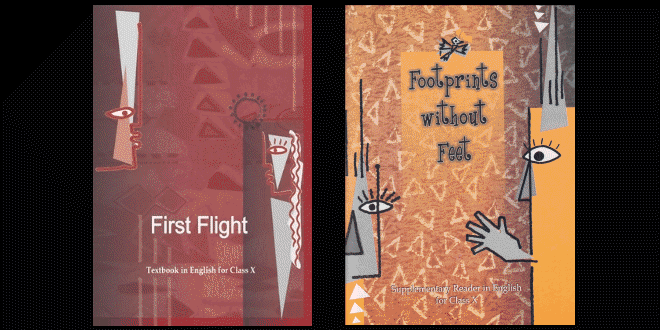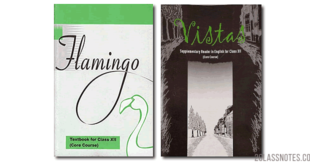A Tiger in the Zoo Poem: 10th Class NCERT CBSE English ‘First Flight’ Chapter 14
Question: Read the poem again and work in pairs or groups to do the following tasks.
- Find the words that describe the movements and actions of the tiger in the cage and in the wild. Arrange them in two columns.
- Find the words that describe the two places and arrange them in two columns.
Now try to share ideas about how the poet uses words and images to contrast the two situations.
Answer:
[1.]
| In the cage | In the wild |
| Stalks | Lurking in shadow |
| Few steps of his cage | Sliding through long grass |
| Quiet rage | Snarling around houses |
| Locked in a concrete cell | Baring his white fangs, his claws |
| Stalking the length of his cage | Terrorizing the village |
| Ignoring visitors | |
| Stares at the brilliant stars |
[2.]
| Cage | Wild |
| Few steps of his cage | Shadow |
| Concrete cell | Long grass |
| Locked | Water hole |
| Behind bars | Plump deer |
| Visitors | Houses at the jungle’s edge |
| Patrolling cars | Village |
Question: Notice the use of a word repeated in lines such as these
- On pads of velvet quiet, In his quiet rage.
- And stares with his brilliant eyes At the brilliant stars.
What do you think is the effect of this repetition?
Answer: This repetition is a poetic device used by the poet in order to increase the intensity of the tiger’s rage and his helpless silence. ‘Velvet quiet’ refers to the quiet velvet pads of the tiger, which cannot run or leap. They can only walk around the limited space in the cage. The use of ‘quiet rage’ symbolizes the anger and ferocity that is building up inside the tiger as it wants to run out into the forest and attack a deer, but the rage is quiet because he is locked in the cage and is helpless. The repetition of ‘quiet’ has, thus, brought immense beauty to the poem. Similarly, the use of ‘brilliant’ for the tiger’s eyes as well as the stars also brings out the magnificence of these lines. The tiger stares at the brilliant stars with his brilliant eyes dreaming about how beautiful his life could be in the forest. The repetition thus, gives a wonderful effect to the poem.
Question: Read the following two poems one about a tiger and the other about a panther. Then discuss:
- Are zoos necessary for the protection or conservation of some species of animals?
- Are they useful for educating the public?
- Are there alternatives to zoos?
The Tiger
The tiger behind the bars of his cage growls,
The tiger behind the bars of his cage snarls,
The tiger behind the bars of his cage roars,
Then he thinks.
It would be nice not to be behind bars all
The time
Because they spoil my view
I wish I were wild, not on show.
But if I were wild, hunters might shoot me,
But if I were wild, food might poison me,
But if I were wild, water might drown me.
Then he stops thinking
And…
The tiger behind the bars of his cage growls,
The tiger behind the bars of his cage snarls,
The tiger behind the bars of his cage roars.
~ Peter Niblett
The Panther
His vision, from the constantly passing bars,
has grown so weary that it cannot hold
anything else. It seems to him there are
a thousand bars; and behind the bars, no world.
As he paces in cramped circles, over and over,
the movement of his powerful soft strides
is like a ritual dance around a center
in which a mighty will stands paralyzed.
Only at times, the curtain of the pupils
lifts, quietly. An image enters in,
rushes down through the tensed, arrested muscles,
plunges into the heart and is gone.
~ Rainer Maria Rilke
Answer: Several species of animals are on the verge of extinction. Even tigers and lions are not safe in the forest due to poaching that is done for trade, etc. Zoos are, thus, necessary for the protection or conservation of these species. Zoos are safe and can also be used to educate the public about the importance of wild animals and their role in maintaining the ecological balance. Wildlife sanctuaries, reserves and national parks are some alternatives to zoos. These not only help in the protection and conservation of these species, but also provide them with a natural habitat.
A Tiger in the Zoo Poem: Summary
This poem contrasts a tiger in the zoo with the tiger in its natural habitat. The poem moves from the zoo to the jungle, and back again to the zoo. The poem provides a contrast in the mood and environment of a tiger when he is in the zoo and a tiger when he is in the forest. In the zoo, he has no freedom. He is kept in a cemented cell behind the bars. He feels angry, frustrated and helpless. This reminds him of his natural habitat, his hiding and sliding in the long grass near the water hole and pouncing upon the fat deer, the way he terrorized the villagers, displaying his sharp teeth and claws.
At night in the zoo he hears the sounds of patrolling cars. The tiger in the zoo appears helpless as to be a mere showpiece and source of entertainment to people. The poet wants to convey that it is cruel to keep wild animals in small enclosures of the zoo, away from their natural habitat. They feel angry, helpless and unhappy in the cage. He pays no attention to the visitors who came to watch him. In the silence of the night, he stares at the brilliant stars with his bright eyes.
 Class Notes NCERT Solutions for CBSE Students
Class Notes NCERT Solutions for CBSE Students






